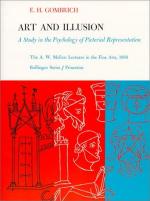|
This section contains 568 words (approx. 2 pages at 400 words per page) |

|
Gombrich and World War II
Although Gombrich did not publish Art and Illusion until 1960, many of the ideas contained in the book had root in Gombrich's experiences in London during World War II. Critics and biographers alike note this fact, as does Gombrich himself in Part Three of the book. Gombrich developed many of his ideas about perception while working for the British Broadcasting Corporation in their Monitoring Services division. His job was to listen to and translate all radio transmissions coming out of Germany for the six years of the war. Through this surveillance, the British government hoped to gain information about what the Germans had planned. However, often the transmissions were faint or garbled. As a result, Gombrich became skilled at "filling in the gaps," so to speak. As he notes in Art and Illusion,
Some of the transmissions which interested us most were often barely...
|
This section contains 568 words (approx. 2 pages at 400 words per page) |

|




